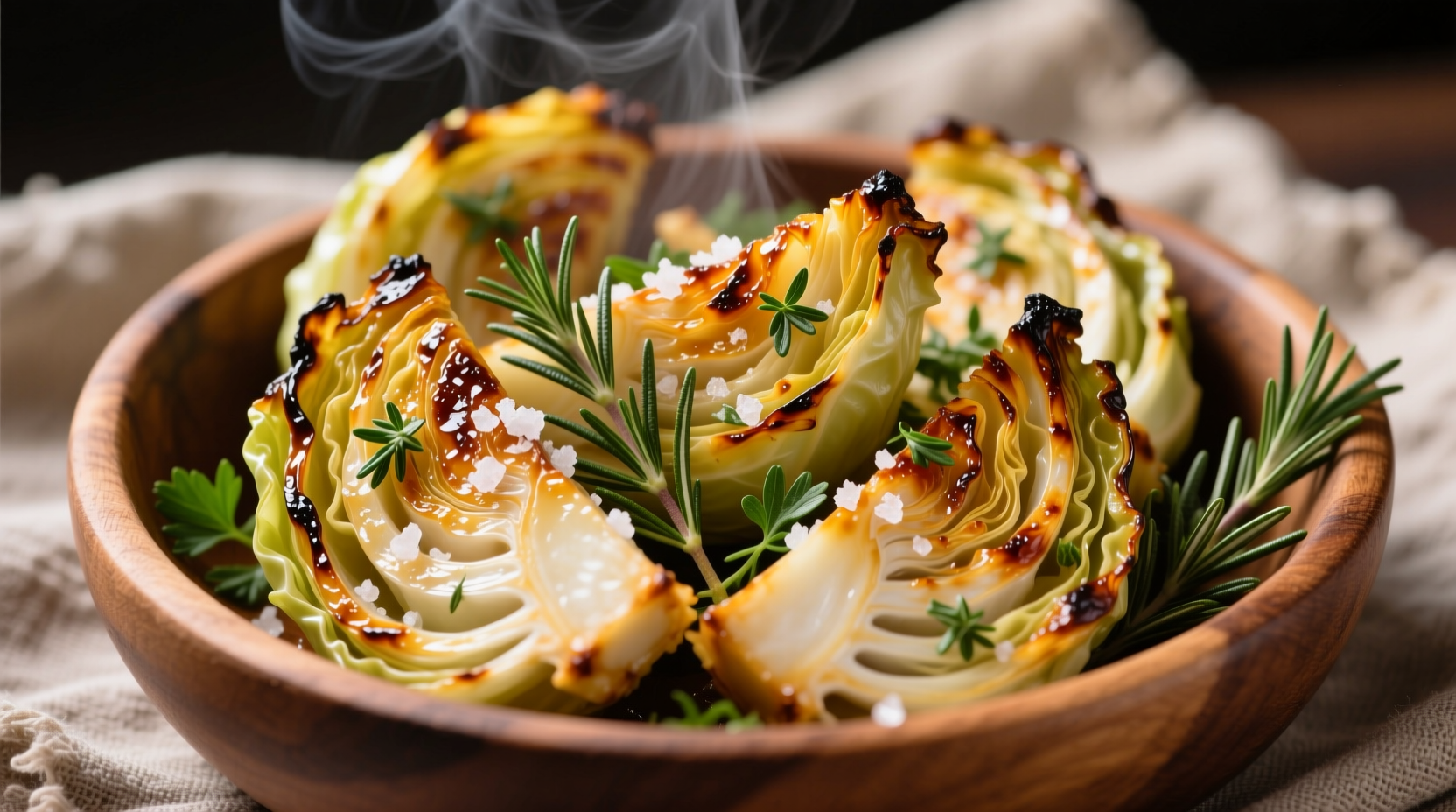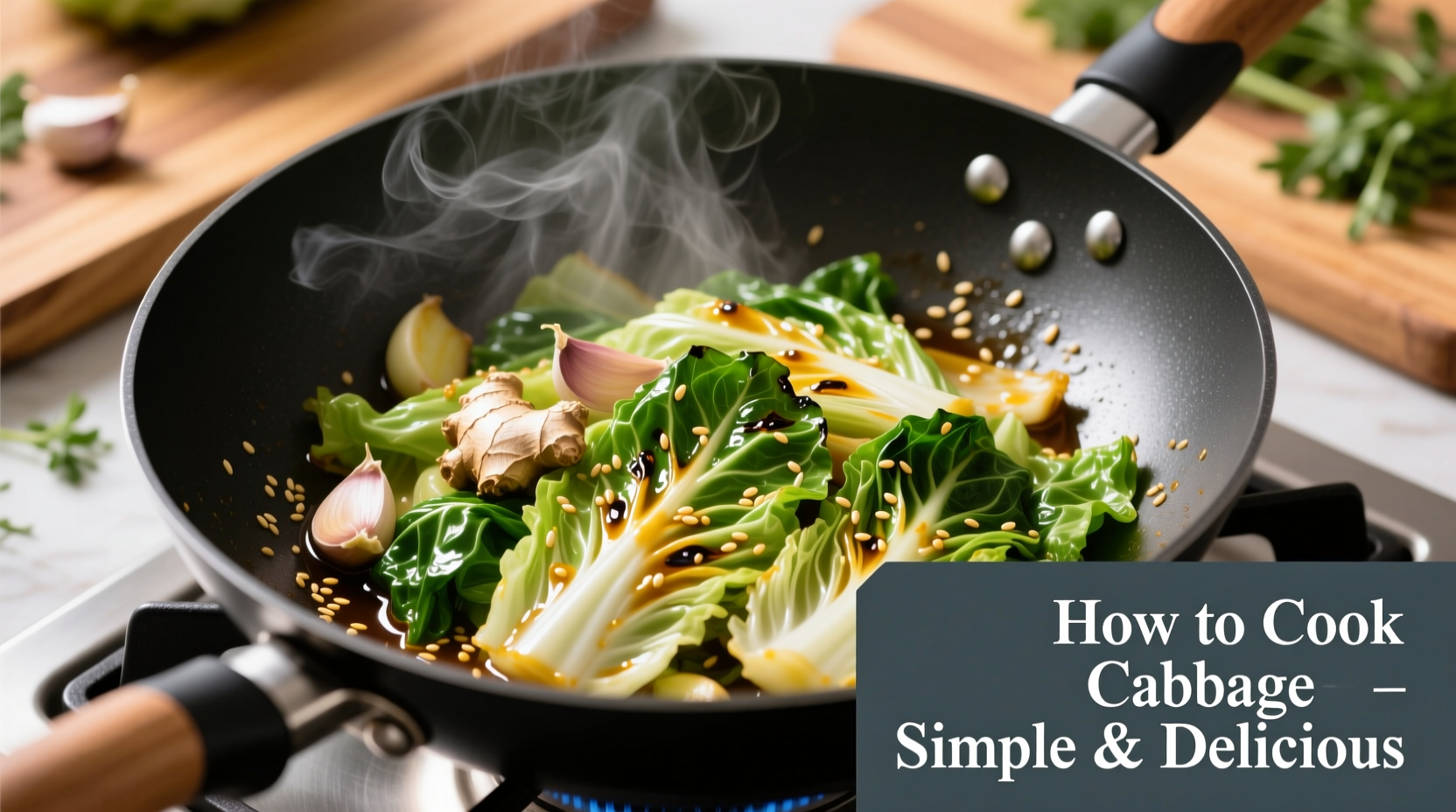Cabbage transforms from crunchy raw vegetable to tender, sweet perfection with the right cooking technique. This versatile cruciferous vegetable contains glucosinolates that break down during cooking, reducing bitterness while enhancing natural sweetness. According to USDA nutritional data, a single cup of cooked cabbage provides 85% of your daily vitamin C needs and just 33 calories, making it a nutritional powerhouse for health-conscious cooks.
Choosing and Preparing Cabbage for Cooking
Select firm, heavy-for-size heads with crisp, vibrant leaves and minimal blemishes. Avoid cabbage with yellowing leaves or soft spots, which indicate age or damage. Different varieties serve different purposes:
| Variety | Best Cooking Method | Flavor Profile |
|---|---|---|
| Green Cabbage | Boiling, stir-frying | Mild, slightly peppery |
| Red Cabbage | Roasting, braising | Slightly sweeter, earthy |
| Savoy Cabbage | Steaming, stuffing | Delicate, buttery |
| Napa Cabbage | Stir-frying, fermenting | Sweet, mild |
Proper preparation prevents common issues like excess moisture and sulfur odors. Remove the outer leaves, cut the cabbage into quarters through the core, then remove the tough core portion. For shreds, slice thinly across the grain; for wedges, keep the core intact to hold shape during cooking. Always rinse under cold water to remove dirt trapped between leaves.

Mastering Cabbage Cooking Techniques
Roasting for Caramelized Sweetness
Roasting transforms cabbage into a rich, sweet side dish with minimal effort. Preheat oven to 400°F (200°C). Toss 1-inch wedges with 1 tablespoon olive oil, salt, and pepper. Place cut-side down on a parchment-lined baking sheet. Roast 25-30 minutes until deeply caramelized and tender when pierced with a fork. The Maillard reaction creates complex flavors as natural sugars caramelize. For enhanced flavor, add caraway seeds or apple cider vinegar during the last 10 minutes of cooking.
Steaming for Bright, Crisp-Tender Results
Steaming preserves cabbage's vibrant color and fresh flavor while achieving perfect tenderness. Fill a pot with 1 inch of water and bring to a simmer. Place cabbage wedges or shreds in a steamer basket, cover, and steam 8-10 minutes for wedges or 5-7 minutes for shreds. Properly steamed cabbage should be tender but still slightly crisp. Overcooking releases sulfur compounds that create unpleasant odors. For restaurant-quality results, shock steamed cabbage in ice water to stop cooking and preserve color.
Stir-Frying for Quick, Flavorful Dishes
Stir-frying works exceptionally well for shredded cabbage in Asian-inspired dishes. Heat 1-2 tablespoons oil in a wok or skillet over high heat until shimmering. Add aromatics like garlic and ginger first, then cabbage. Stir-fry 5-7 minutes, constantly moving the cabbage. The key to perfect stir-fried cabbage is maintaining high heat while preventing steaming. Add liquids like soy sauce or rice vinegar toward the end to prevent boiling. For authentic texture, professional chefs add a pinch of sugar to balance flavors and enhance browning.
Boiling and Simmering for Soups and Stews
Boiling works best when cabbage will be incorporated into liquid-based dishes. Use a large pot with enough water to cover the cabbage. Bring to a boil, add salt, then add cabbage. Simmer 5-7 minutes until tender-crisp. Drain immediately to prevent overcooking. When adding cabbage to soups or stews, introduce it during the last 10-15 minutes of cooking to maintain texture. For creamier dishes, simmer cabbage in broth rather than water to infuse additional flavor.
Flavor Pairing Strategies for Perfect Cabbage Dishes
Cabbage's mild flavor makes it incredibly versatile across global cuisines. Understanding flavor chemistry helps create balanced dishes:
- Acid Balance: A splash of vinegar or lemon juice after cooking brightens flavors and counters bitterness
- Fat Integration: Cabbage absorbs fats beautifully—use bacon fat, olive oil, or butter to carry flavors
- Umami Boosters: Anchovies, soy sauce, or mushrooms deepen cabbage's natural savoriness
- Spice Timing: Add dried spices early in cooking; fresh herbs at the end for maximum impact
For European preparations, combine with caraway, apples, and onions. Asian dishes shine with ginger, garlic, and sesame oil. Mexican-inspired cabbage works well with lime, cilantro, and jalapeño. The FDA recommends cooking cabbage to an internal temperature of 160°F (71°C) for food safety when combined with proteins in mixed dishes.
Avoiding Common Cabbage Cooking Mistakes
Even experienced cooks make these preventable errors:
- Overcooking: Leads to mushy texture and strong sulfur odors—use a timer and check early
- Improper Water Management: Boiling without enough water concentrates bitter compounds
- Seasoning Too Late: Salt early to help break down fibers and enhance flavor absorption
- Ignoring Variety Differences: Using delicate Napa cabbage for long braises results in disintegration
When cooking cabbage for meal prep, remember that it continues to cook from residual heat after removal from the stove. Professional chefs recommend removing cabbage from heat when it's slightly firmer than your desired final texture.
Storing and Using Leftover Cooked Cabbage
Proper storage extends the life of cooked cabbage while maintaining quality. Cool cooked cabbage quickly by spreading it in a thin layer on a baking sheet. Transfer to airtight containers once cooled—never store while still hot. Refrigerate for up to 4 days. For longer storage, freeze cooked cabbage in portion-sized containers for up to 3 months. Thaw overnight in the refrigerator before reheating.
Creative uses for leftover cabbage include:
- Add to omelets or frittatas
- Mix into grain bowls or salads
- Blend into soups for added nutrition
- Use as pizza topping
- Transform into quick slaw with vinegar and oil











 浙公网安备
33010002000092号
浙公网安备
33010002000092号 浙B2-20120091-4
浙B2-20120091-4